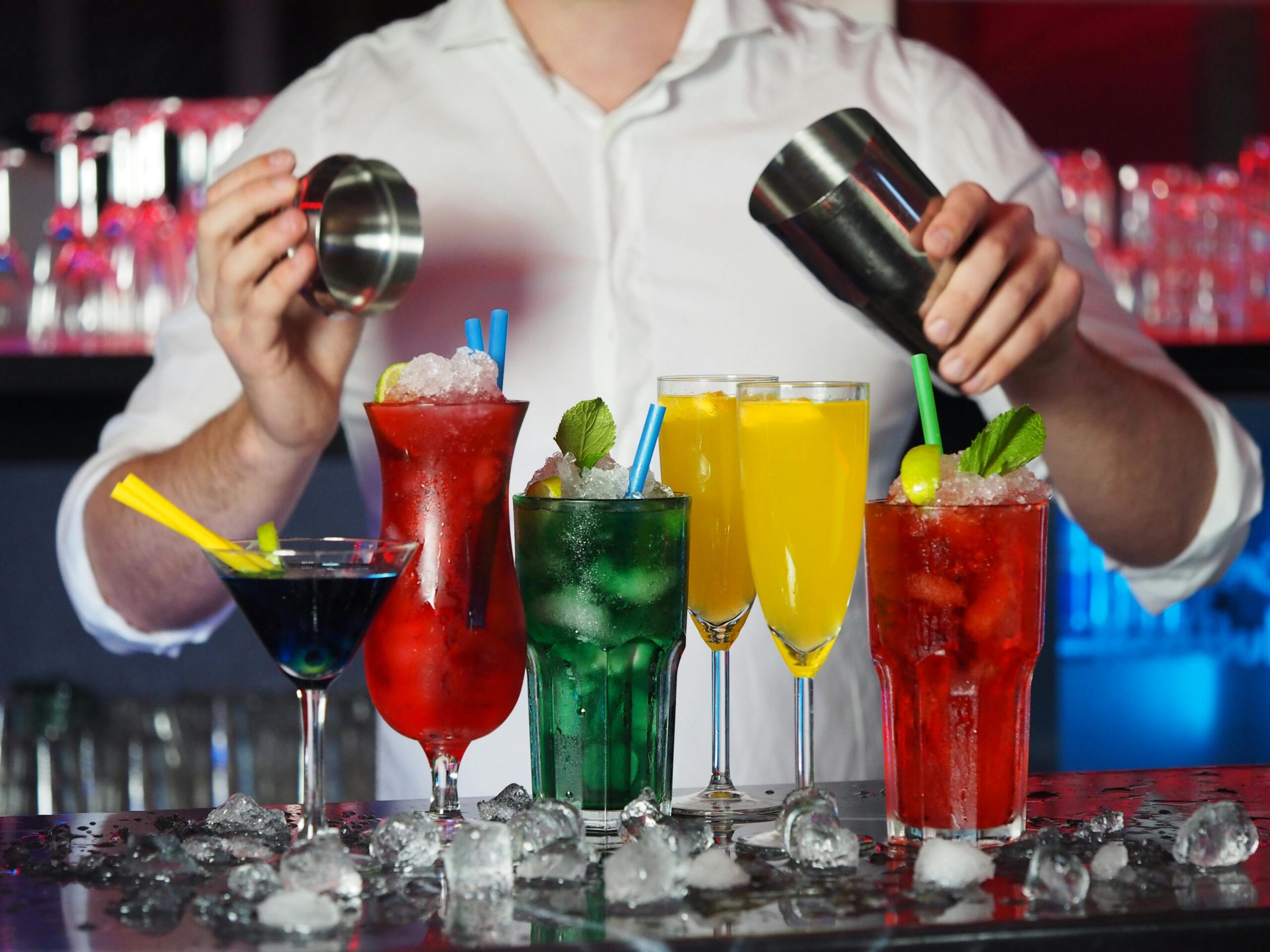Introduction to the World of Spirits
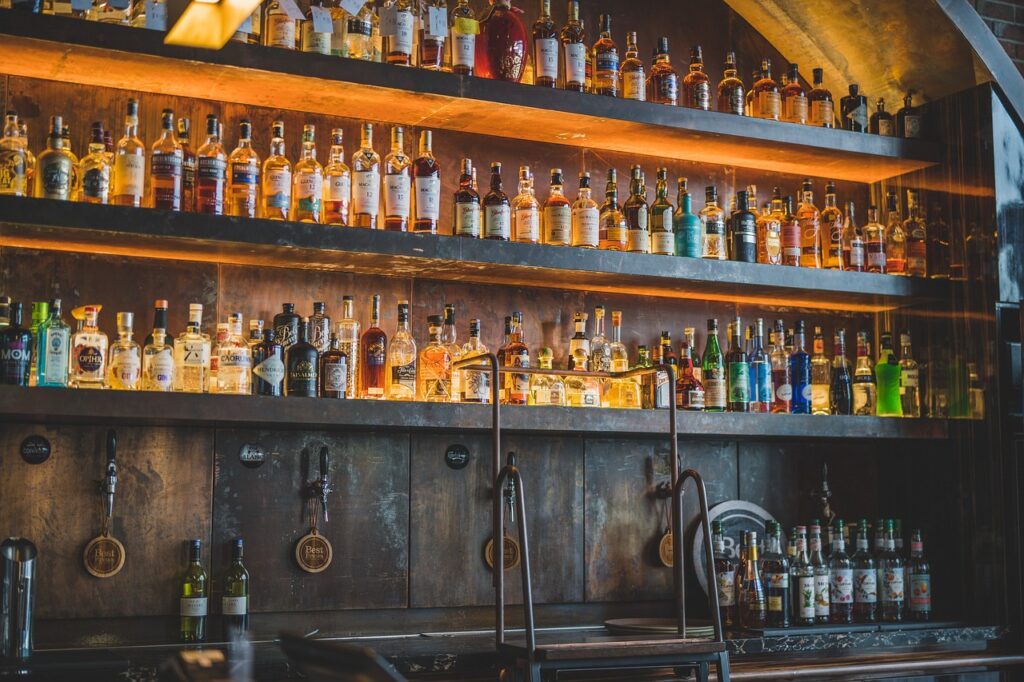
The Essence of Spirits: Distilled Alchemy in a Bottle
Welcome to the fascinating realm of spirits, where each bottle captures distilled alchemy, offering a unique experience beyond mere intoxication. Spirits are the result of an age-old process, a transformation of simple base ingredients into complex, enjoyable libations. Imagine, if you will, the careful selection of grains, fruits, and botanicals, the time-honored traditions and precise techniques—all converging to yield the spirited treasures we savor. Whether it’s the smoothness of vodka or the aromatic bouquet of gin, spirits promise a journey for your palate, steeped in history and craftsmanship.
Navigating the Spectrum of Alcoholic Beverages
Navigating the spectrum of alcoholic beverages is like exploring a vast horizon of tastes, textures, and traditions. From the effervescent charm of beers and ciders to the complexity of wines and the boldness of spirits, each category holds its unique allure. Undistilled alcohol, such as wine and beer, is produced through fermentation, where sugars are converted into alcohol. As you chart your course, you will discover beverages that are fermented, such as beer and wine, lying on one end of the spectrum, where they gain their alcohol content from yeast consuming sugars. Move along this spectrum, and you enter the world of distilled alcoholic beverages – a zone of higher alcohol concentration and a kaleidoscope of flavors. Learning to distinguish between them is as much about understanding their production methods as it is about appreciating the subtleties in flavor they offer.
What is Ethyl Alcohol?
Ethyl alcohol, also known as ethanol, is the cornerstone of all alcoholic beverages. This clear, colorless liquid is produced through the fermentation of sugars by yeast, a process that transforms simple ingredients into the spirited drinks we enjoy. Ethyl alcohol is the only type of alcohol safe for human consumption in moderation, distinguishing it from other types like isopropyl alcohol or rubbing alcohol, which are toxic.
As a depressant, ethyl alcohol slows down the central nervous system, affecting cognitive and motor functions. It is also a psychoactive substance, capable of altering mood, perception, and behavior. The effects of ethyl alcohol can vary widely depending on the amount consumed, individual tolerance, and the context of consumption.
Found in a variety of alcoholic beverages, from light beers to robust distilled spirits, ethyl alcohol is also used beyond the bar. It serves as a solvent, a disinfectant, and even a fuel. However, its versatility comes with a need for caution, as improper use can be hazardous. Understanding ethyl alcohol’s role in both our drinks and daily lives underscores its significance and the importance of responsible consumption.
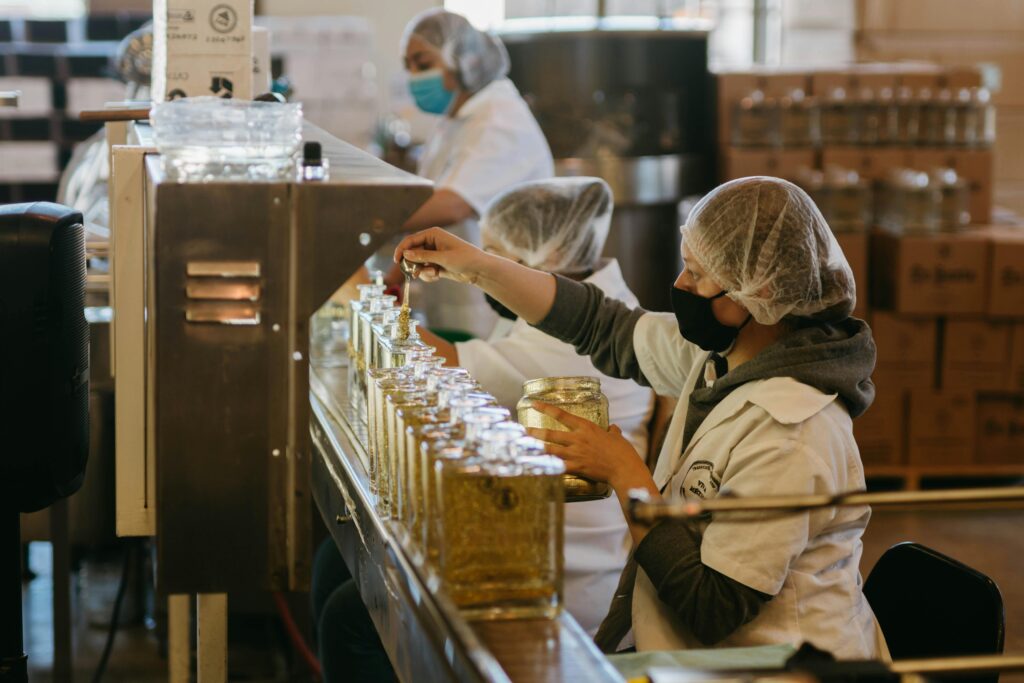
The Basics of Alcoholic Spirits
Defining Spirits: Terminology of Distilled Alcoholic Beverages Demystified
As you dive into the world of spirits, you might encounter a few terms that seem to be used interchangeably, yet have nuances worth understanding. When discussing distilled and undistilled alcohol, it’s important to note that undistilled beverages, like wine and beer, are created through fermentation, while distilled drinks have undergone an additional distillation process that increases their alcohol content. ‘Spirits’ refer to alcoholic beverages that have been distilled, leading to higher alcohol content and purity compared to fermented drinks like beer or wine. This category includes fan favorites like vodka, rum, and whiskey. On the other hand, ‘liquor’ is a term often used casually to describe any drink that packs a punch in terms of alcohol content, enveloping both spirits and liqueurs. Understanding this terminology helps demystify the world of alcoholic drinks and sets the foundation for a more knowledgeable and appreciative drinking experience.
Spirits are the purest expression of their ingredients and origins, distilled down to their essence and character. Each spirit tells a story—from the grain, fruit, or plant it starts with, to the stills it passes through, to the casks it rests in. That essence, whether smoky, earthy, floral, or spicy, is a reflection of the landscape and tradition it comes from. When you taste a spirit, you’re tasting not just alcohol, but a crafted experience—something that’s been nurtured, distilled, and refined to capture the soul of its ingredients and the artistry of its maker.
How Spirits Differ from Other Alcoholic Beverages
Distilled beverages stand out in the alcohol world due to their production process: distillation. Unlike beer and wine, which reach their alcoholic content through fermentation alone, distilled beverages go a step further. The magic happens when fermented liquid is heated, causing alcohol and other compounds to vaporize. These vapors are then condensed back into liquid form, resulting in a purer and significantly more potent beverage. It’s this distillation that gives distilled beverages their higher alcohol by volume (ABV), typically around 40% to over 70%, and their renowned moniker ‘hard liquor’. Whether it’s the velvety touch of brandy or the sharpness of tequila, each spirit carries the essence of its ingredients, thoroughly concentrated and full of character.
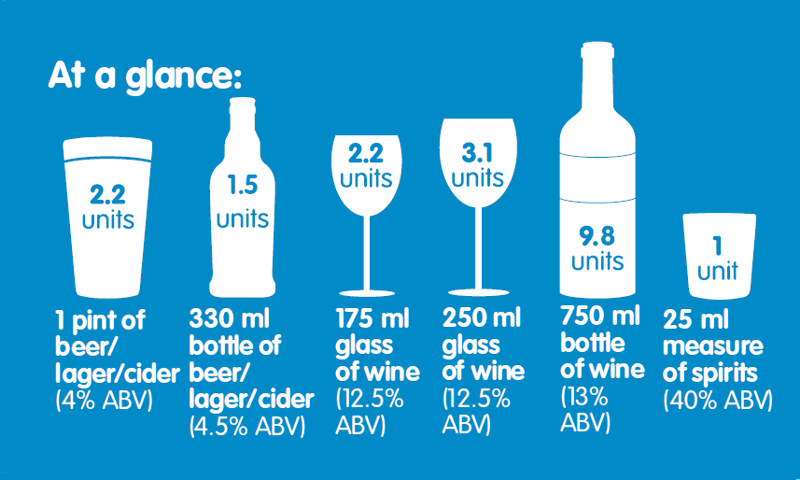
The Making of Spirits: An Art and Science
Unveiling the Distillation Process
The distillation process, the heart of spirit-making, is an enthralling blend of art and science. It starts with fermentation, where sugars are converted into alcohol. Once this base liquid, or ‘wash’, is prepared, it’s time for distillation. The wash is heated in a still, where alcohol, having a lower boiling point than water, evaporates first, resulting in distilled drinks. This vapor then travels through a cooling system, condensing back into liquid form, now with a higher alcohol concentration. The skill lies in knowing at what points to collect the ‘cuts’ – the optimal parts of the distillate for flavor and purity. It’s a meticulous process, where temperature control, timing, and even barometric pressure play roles in creating the perfect spirit.
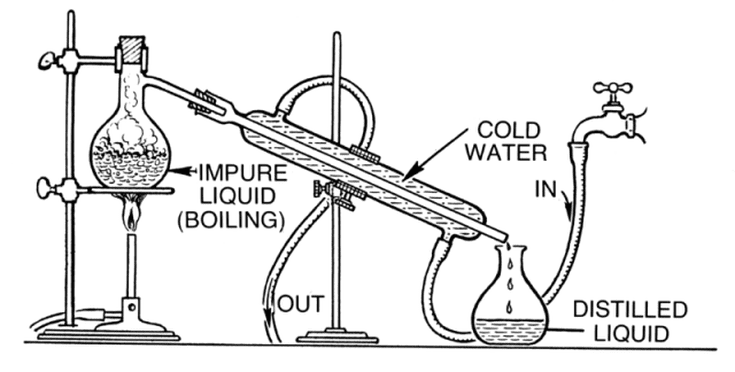
Key Ingredients That Shape Different Spirits
The character and uniqueness of each spirit are largely shaped by their key ingredients, which impart distinct tastes, aromas, and even textures. For example, think of gin and its unmistakable juniper berry flavor, combined with a symphony of other botanicals. Whiskey owes its rich palette of flavors to malted and fermented grains, often barley, rye, wheat, or corn, which also determine its sub-varieties, such as bourbon or Scotch. Brandy is the spirit of fermented fruit juice, commonly from grapes, while vodka is a versatile spirit traditionally made from potatoes or grains, known for its clean taste. Tequila and mezcal both celebrate the agave plant; the former strictly from blue agave and the latter from various types of agave, which gives it a smokier profile.
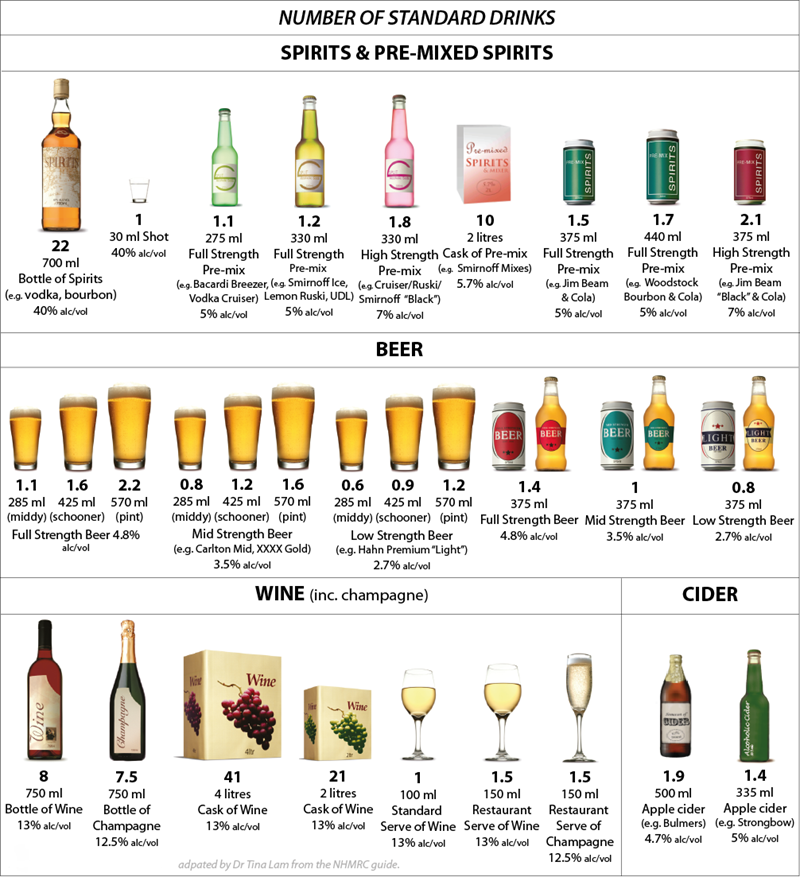
Exploring the Main Types of Spirits
White Spirits: Vodka, Gin, and Others
The world of white spirits beckons with its crystalline appearance and diverse flavors. Vodka stands as a pillar among them, prized for its neutrality, offering a clean canvas for cocktail artistry. Originating from Russia or Poland, its taste is subtle, often distilled from grains or potatoes, making it a versatile player in mixed drinks. Then there’s gin, crafted with a botanical bouquet dominated by juniper, lending its distinctive herbaceous and sometimes floral notes, essential to classics like the gin and tonic or martini. Other white spirits include tequila, which must be made from blue agave and primarily hails from specific regions in Mexico, providing an earthy zest to margaritas and beyond. Hard cider, known as fermented apple juice, is another notable mention, typically containing around 5% ABV and offering a refreshing, fruity profile. Each white spirit has its charm, ready to be discovered neat or in a myriad of cocktails.
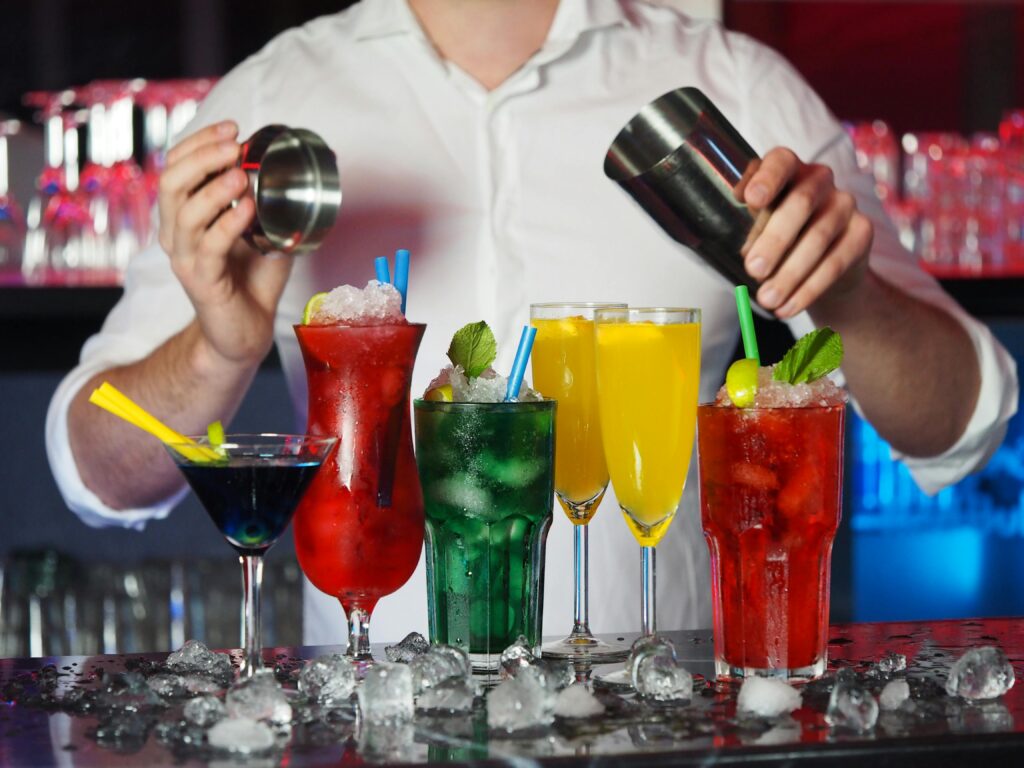
Dark Spirits: Whiskey, Rum, and Beyond
Dark spirits form an enchanting category defined by their amber hues and depth of flavor. Whiskey – or whisky, if you’re visiting Scotland or Canada – is a tapestry of tastes from sweet to smoky, influenced by the grain used and the aging process in oak barrels. It can be enjoyed as is around a crackling fire or harnessed in cocktails like a robust Manhattan or an Old-fashioned. Rum, with its Caribbean soul, varies from light to full-bodied dark variants, where the aging process instills notes of caramel and molasses – think of a warming rum punch or a refreshing mojito. Other dark spirits may include brandies and cognacs, often sipped slowly to appreciate their complex profiles deeply ingrained during their extended barreling time. Fortified wines, such as sherry and port, also fall into this category, combining wine with distilled liquor like brandy to achieve a higher alcohol content and unique flavor profiles.
[Include a montage of dark spirits in glasses, showcasing their rich colors and suggested pairings]
The Strongest Alcoholic Drinks
When it comes to potent alcoholic drinks, distilled spirits often take the crown, boasting high alcohol content that commands respect. These powerful beverages are not for the faint-hearted and should be enjoyed with caution. Here are some of the strongest alcoholic drinks that push the boundaries of alcohol content:
- Absinthe: Known for its green hue and anise flavor, absinthe can reach up to 75% alcohol by volume (ABV). Historically dubbed “the green fairy,” it has a storied past and a potent kick.
- Everclear: This clear, grain-based spirit is infamous for its staggering 95% ABV, making it one of the strongest commercially available alcoholic drinks.
- Bacardi 151: A rum that packs a punch with 75% ABV, Bacardi 151 is often used in cocktails that require a robust spirit.
- Spirytus: Hailing from Poland, this vodka boasts an impressive 96% ABV, making it a formidable spirit that demands respect.
- Devil’s Springs Vodka: With an ABV of up to 80%, this vodka is another heavyweight in the world of strong alcoholic drinks.
These distilled spirits exemplify the upper echelons of alcohol content, showcasing the power and intensity that can be achieved through distillation. However, their strength necessitates responsible consumption, as overindulgence can lead to severe health risks and impaired judgment. Enjoy these potent beverages in moderation, savoring their unique qualities while respecting their formidable potency.
Specialty Spirits and Liqueurs
The Charisma of Liqueurs: Flavors and Sweetness
Liqueurs bring a splash of sweetness and a burst of flavor to the spirits world, captivating with their charisma. They’re concocted by infusing spirits with fruits, herbs, nuts, spices, or cream, followed by a sweetening agent. This results in a tantalizing spectrum that ranges from the nutty allure of Amaretto and the herbaceous kick of Jägermeister to the creamy indulgence of Bailey’s Irish Cream. Served as digestifs, in dessert drinks, or as a bold addition to cocktails, liqueurs add a playful twist and color to any drinking occasion. Their lower alcohol content, typically between 15-30% ABV, makes them a versatile choice for a gentle sip or a mixed drink enhancer.
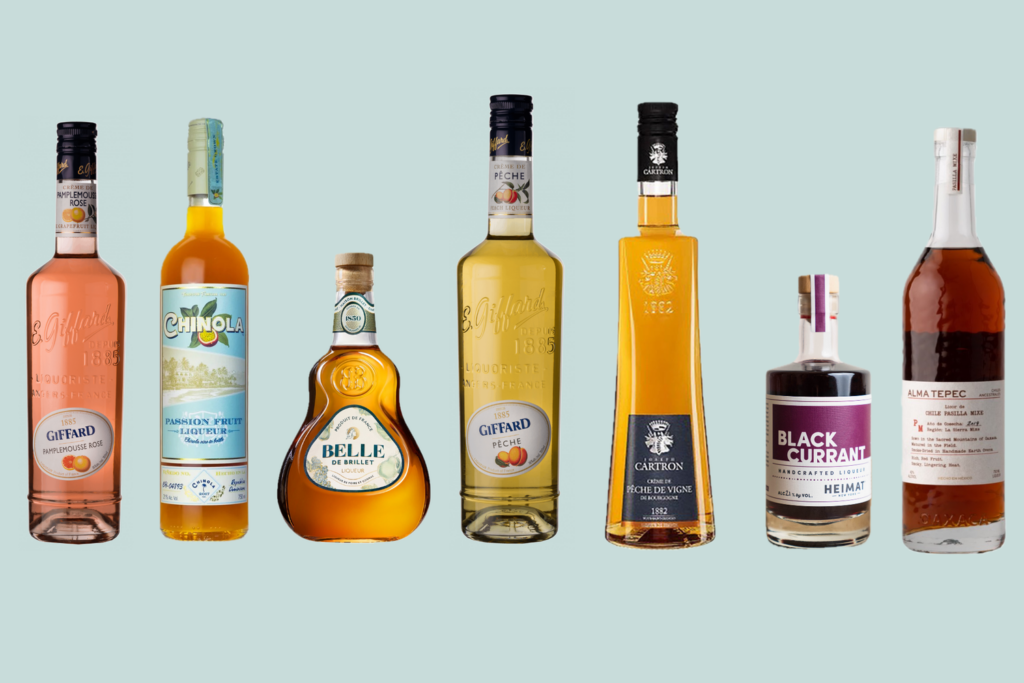
Herbal and Botanical Spirits: A Unique Sip
Herbal and botanical spirits are a botanical garden in a glass, providing a unique sip that captures nature’s essence with an alcoholic kick. These spirits are crafted with a blend of plant-based ingredients – roots, berries, barks, flowers, and herbs, creating a cornucopia of flavors that can range from soothingly floral to intriguingly bitter. Sipping on a Jägermeister, one experiences a rich, spicy and complex herbal blend, while Chartreuse offers a legendary recipe of 130 plants for a sweet and pungent elixir. St. Germain, an elderflower liqueur, charms with fragrant sweetness, ideal for a floral twist in your cocktail. These spirits charm the senses and have the power to transport one to lush, green landscapes or a sun-drenched Mediterranean hillside.
Cultural Significance and Social Aspects of Spirits
Spirits in Tradition and Celebration
Spirits often shine as the highlight in cultural traditions and celebrations, marking milestones and festivity with toasts and cheer. In Japan, sake, a revered rice wine, plays a pivotal role in Shinto purification rituals and wedding ceremonies, symbolizing purification and shared connection. Russia’s iconic vodka is central to social life, where toasting with a shot is not only about the drink but the elaborate speeches and proper etiquette that accompany it. Each country, each culture, holds its spirit in high regard, utilizing them in ways that go beyond the drink itself to act as vehicles of history, pride, and communal unity. When raising a glass, you partake not just in a beverage, but in a rich legacy that continues to flourish globally.
The Role of Spirits in Culinary Pairings and Mixology
Spirits play an intriguing role in culinary arts, elevating dining experiences through thoughtful pairings and the alchemy of mixology. The right spirit can cut through the richness of a succulent steak or complement the subtle flavors of fresh seafood. A smoky Scotch might pair perfectly with aged cheeses, while the delicate notes of a fine cognac could enhance the flavors of a chocolate dessert. In the world of mixology, spirits are the backbone of countless cocktails, from the classic simplicity of a vodka martini to the layered complexity of a rum-based Zombie. Behind the bar, a mixologist combines spirits with precision and creativity, crafting concoctions that delight the senses and mirror the culinary craft in their balance of elements.
[Visuals of expertly paired dishes with spirits, and a mixologist in action, crafting an intricate cocktail.]
Health Considerations and Safe Consumption
Understanding Alcohol Content and Standard Drink Measures
Understanding alcohol content and standard drink measures is crucial for enjoying spirits responsibly. Alcohol content, indicated as alcohol by volume (ABV), reveals the strength of your beverage. Drinking alcohol has been a part of human history for thousands of years, with different types of alcohol, such as ethanol, playing a significant role in popular beverages due to their psychoactive effects. For instance, in the U.S., a standard drink typically contains about 14 grams of pure alcohol, found in 12 ounces of beer, 5 ounces of wine, or 1.5 ounces of distilled spirits, each with varying ABV percentages. This standardized measuring system aids you in keeping your consumption within safe limits as well as in comparing different types of beverages. Knowing that a pour of whiskey might be equivalent in alcohol content to a larger serving of beer helps you to manage and moderate your intake, ensuring a pleasing and responsible drinking experience.
Moderation and Risks: Balancing Enjoyment with Health
While the enjoyment of spirits can be a wonderful part of life’s celebrations and quiet moments alike, moderation is key to balancing that pleasure with your health. Moderate consumption is generally defined as up to one drink per day for women and two for men, recognizing that even this level might bring risks for some individuals. Overconsumption can lead to a host of health issues, including an increased risk for certain cancers, liver disease, and addiction. Being mindful of your intake, understanding how alcohol interacts with your body, and listening to health professionals’ guidance helps you enjoy spirits without compromising your wellbeing. It’s about sipping slowly, savoring the experience, and maintaining a lifestyle that prioritizes health along with happiness.
Moderation is key to truly appreciating spirits. It’s about savoring each sip, understanding the craft and care that went into it, rather than simply consuming it. When enjoyed responsibly, spirits can enhance moments, connect us to culture and tradition, and allow us to explore flavors that are rich and complex. Without moderation, though, we lose that connection, and the appreciation gives way to excess. The beauty of a well-crafted spirit lies in enjoying it mindfully and with respect.
Modern Trends in the Spirits Industry
Craft Distilleries and Innovation in Spirits
The spirits industry is undergoing a renaissance, with craft distilleries at the forefront of innovation. These smaller-scale producers champion the art of distillation, breathing new life into traditional methods and experimenting with avant-garde techniques. They might use locally sourced, non-traditional ingredients or age spirits in unique barrels, creating novel flavor profiles and exciting limited-edition releases. From organic gins infused with locally foraged botanicals to single malt whiskies that showcase the terroir of their region, the movement is broadening palates and inviting connoisseurs and casual drinkers alike to explore and appreciate the complexities of spirits. This wave of craftsmanship is not just about the end product but about celebrating the journey from grain to glass.
Sustainability and Ethical Production of Spirits
Sustainability and ethical production are increasingly important in the spirits industry, reflecting a growing consumer desire for products that align with their values. Progressive distilleries are emphasizing greener practices, such as using organic ingredients, investing in renewable energy, and reducing water usage and waste. Ethical considerations extend to fair labor practices and supporting local communities. Some brands even introduce programs to offset carbon emissions associated with production and shipping. Moreover, there is a trend towards transparency, with more producers sharing detailed information about sourcing, production processes, and their overall environmental impact. These initiatives not only contribute to a healthier planet but also often enhance the quality and character of the spirits themselves.
Conclusion
In conclusion, the world of spirits is vast and diverse, offering a wide range of alcoholic beverages to suit different tastes and preferences. From the effervescent charm of beers and wines to the bold intensity of distilled spirits and the sweet allure of liqueurs, each type of drink has its unique characteristics, ingredients, and production methods.
However, it is essential to remember that excessive alcohol consumption can have serious health consequences, including alcohol addiction, liver damage, and impaired cognitive and motor functions. Therefore, it is crucial to consume alcoholic beverages responsibly and in moderation.
By understanding the different types of spirits, their ingredients, and their effects on the body, individuals can make informed choices about their drinking habits and enjoy their favorite drinks in a safe and responsible manner. Cheers to a well-informed and balanced approach to alcohol consumption!

Mitchell Grant Cohen
Dr. Mitchell G. Cohen is a board-certified Internal Medicine specialist with over 34 years of experience in patient-centered healthcare. A graduate of Hahnemann University School of Medicine, Dr. Cohen completed his internship at the University Health Center of Pittsburgh, where he gained invaluable hands-on experience. He is also a certified addiction specialist, holding membership with the American Society of Addiction Medicine (ASAM).
Currently based in Nashua, NH, Dr. Cohen is affiliated with Saint Joseph Hospital, where he provides comprehensive care focusing on both internal medicine and addiction treatment. His expertise includes prevention, diagnosis, and management of adult diseases, as well as specialized care for individuals facing substance use disorders.
Dr. Cohen is committed to fostering open communication, ensuring his patients are fully informed and empowered to make confident decisions about their health and treatment options.

